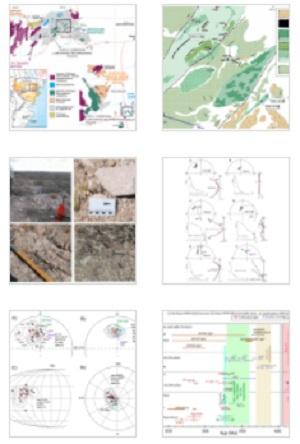Carmen I. Martínez Dopico, Paul Y.J. Antonio, Augusto E.Rapalini, Mónica G. López de Luchi, Carolina Grillo Vidal
2 021
Journal of South American Earth Sciences Volume 106, March 2021, 102970
A paleomagnetic study was carried out in the Ordovician granitoids located in the northeastern North Patagonian Massif (NPM), close to Valcheta town (Río Negro Province, Argentina), to provide new evidence on the relation between Patagonia and Gondwana during the Early Paleozoic. A paleomagnetic paleopole (VA1) was calculated out of 14 VGPs yielding a mean at 12.7°N, 275.5°E with K = 13.3 and A95 = 11.3°. A second result (VA2-remag), computed on other component found in 12 sites is located at 76.4°S, 84°E, K = 11.8 and A95 = 5°. VA2-remag fits very well with the Lower Jurassic segment of the apparent polar wander path of Gondwana. We interpret that it corresponds to a remagnetization carried mostly by high-coercitive components acquired during the hydrothermal activity associated with the Early Jurassic effusion of the Marifil-Chon Aike volcanic province. VA1 paleopole becomes consistent with the Gondwana apparent polar wander path at ~450 Ma, after applying a 30–40° CCW rotation of the NPM to restore a V-shaped basin (Sierra Grande sea) opened before Permian-Triassic times. This rotation restores the paleogeographical position of the Ordovician granites of northeast NPM to the south of the Sierras Pampeanas aligning them with the eastern domain of the Famatinian orogenic and magmatic belt. VA1 paleopole suggests that the position of the NPM was close to the South American margin of Gondwana and separated by the Sierra Grande Sea from the Rio de la Plata-Kalahari cratons from, at least, late Ordovician times, which favors a para-autochthonous origin for the NPM. A former hypothesis suggesting a connection of the NPM and the TransAntarctic Mountains is unlikely for the late Ordovician according to our new data, which only allows an allochthonous NPM close to the Kalahari craton.

